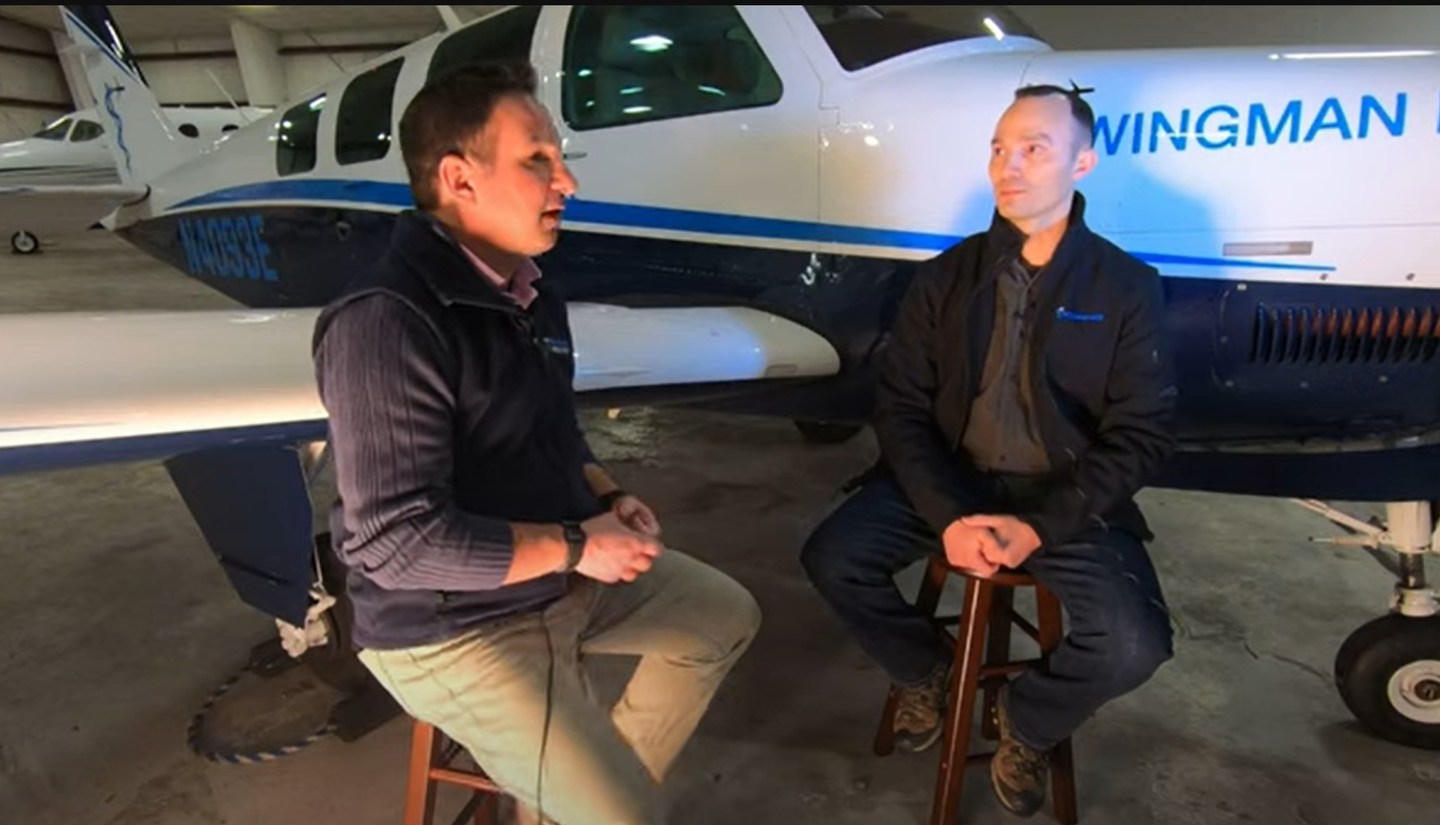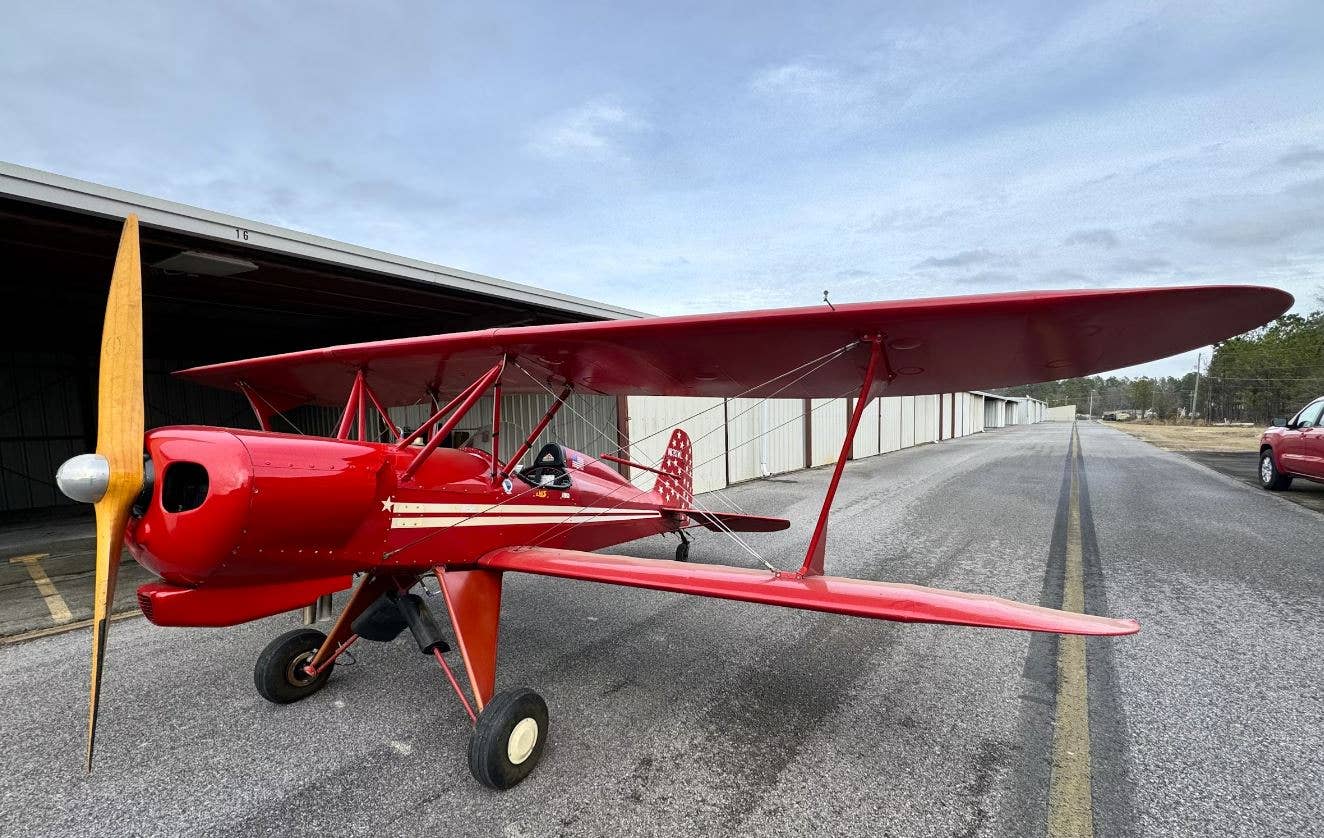The Race to Build Dayton-Wright’s Time Machine
In the film Back to the Future II, the antagonist Biff Tannen steals a sports almanac containing scores from every major sporting event over a 50-year time span and delivers…

With the landing gear extended, the forward and trailing edges of the wing also extend, increasing the camber and enabling flight at lower airspeeds. [Credit: USAF archives]
In the film Back to the Future II, the antagonist Biff Tannen steals a sports almanac containing scores from every major sporting event over a 50-year time span and delivers it to his younger self via a time machine. Armed with this knowledge from the future, his younger self then utilizes the almanac to gamble, amassing a fortune estimated by fan websites to exceed $3.1 billion and forever altering the trajectory of that timeline.
While there’s no concrete evidence a similar chain of events occurred in the world of aeronautical engineering, the concepts utilized by the Dayton Wright RB-1 certainly suggest at least one time machine was involved in its development.
When the RB-1 was constructed in 1920, the vast majority of aircraft were still rickety-looking contraptions. Most were biplanes utilizing fabric covering, external wire bracing, and spindly-looking fixed landing gear. World War I-era rotary radial engines were still commonplace, their crankcase and cylinders spinning in their entirety as though the engine manufacturers were sponsored by gyroscopic precession itself.
At the time, developments like a variable-camber wing and retractable landing gear must have resembled science fiction to most, but not to the people at Dayton-Wright in Ohio. There, a small team of engineers was tasked with creating an aircraft specifically to compete in the Gordon Bennett trophy race in France. This prestigious race consisted of three laps of a 300 km (186 mile) course, and a victory would bestow enviable bragging rights to the aircraft manufacturer.
Favorites for the 1920 race included aircraft built by Neuport, Spad, and Verville-Packard. All were among the fastest aircraft in the world at that time. But all were also open-cockpit biplanes, seemingly designed and built with little regard for parasite drag.
Dayton-Wright identified this as an opportunity. In a flight regime where any horsepower gains are quickly overshadowed by exponentially-increasing drag, they designed and utilized features unheard of in that era. Features that in the following decades would become commonplace on virtually all aircraft built for speed.
Prioritizing drag reduction from the beginning, they designed a fully-enclosed cockpit and opted for a single wing instead of a biplane configuration. They utilized a cantilever wing, avoiding extraneous wing struts or bracing cables that would slow the airplane down. They understood that a smaller wing would be more efficient at higher speeds, but they also understood that additional lift would be necessary for takeoff and landing.
To balance these opposing demands, they introduced what is thought to be the first wing with adjustable camber via leading-edge and trailing-edge devices. Like a modern wing with slats and flaps, the RB-1’s wing could be configured in flight by the pilot. For takeoff and landing, camber would be increased and slower airspeeds would be possible, but for high-speed cruise, the wing could be flattened and streamlined to reduce drag.
The engineers didn’t stop there. Recognizing that landing gear is a massive source of drag at higher speeds, they developed (and patented) a novel retractable landing gear design. By turning a hand-operated crank linked to chains and gears, the pilot could raise the gear in approximately ten seconds and lower it in approximately six.
The engineers also linked the landing gear to the variable-camber wing. Retracting the gear also retracted the leading and trailing edges of the wing. When it was time to land, everything extended at once, in unison.
The entire front section of the airplane was dedicated to the engine’s massive radiator, which completely enveloped the crankshaft. No forward windscreen was provided to the pilot; like the Spirit of St. Louis, they would have to make do with the side windows and utilize their peripheral vision for takeoff and landing.
Having sculpted the monocoque fuselage and wing to their liking, Dayton-Wright turned to the powerplant. They chose a water-cooled inline six manufactured by Hall Scott and producing 250 horsepower. At the RB-1’s maximum takeoff weight of 1,850 pounds, this gave it a better horsepower-to-weight ratio than a similarly-loaded Republic P-47 Thunderbolt.
The RB-1 first flew in 1920, not long before the trophy race. Test pilots conducted a short series of test flights at the company’s facilities near Dayton, Ohio, and estimated the airplane’s top speed would approach 200 mph. Afterward, the airplane was disassembled, packed into a crate, and shipped off to France.
When the big day came, the RB-1 took off from Ville Sauvage near Étampes in the company of the other competitors, only to have to abandon the race and return to the airport after only 15 minutes. Sources vary with regard to the reasoning. Most claim the pilot was unable to retract the gear and flaps, but Flight magazine reported that he experienced “difficulty with his steering.”
Given the complexity of the wing, it’s possible only one wing had experienced mechanical issues, thus introducing asymmetry and affecting the control and steering. In any case, the RB-1 returned safely. It was shipped back to the U.S., and it never flew again. It remains unclear why no further flying attempts were made.
Today, the RB-1 is on display at the Henry Ford Museum near Detroit, Michigan. It has been properly restored and hangs with its gear and flaps retracted. An elevated walkway provides visitors with a view of the unique flap mechanism on top of the wing.
Although unsuccessful in its intended mission, the RB-1 brought a blend of remarkably futuristic technologies to light in an era of relatively primitive aircraft and permanently altered the trajectory of aircraft design. To date, no evidence of time travel has been discovered in the development of this groundbreaking aircraft.
Previously published on flyingmag.com.

Subscribe to Our Newsletter
Get the latest Plane & Pilot Magazine stories delivered directly to your inbox






